Potrebujeme váš súhlas na využitie jednotlivých dát, aby sa vám okrem iného mohli ukazovať informácie týkajúce sa vašich záujmov. Súhlas udelíte kliknutím na tlačidlo „OK“.
ASTM E1886-13a
Standard Test Method for Performance of Exterior Windows, Curtain Walls, Doors, and Impact Protective Systems Impacted by Missile(s) and Exposed to Cyclic Pressure Differentials (Includes all amendments And changes 10/15/2019).
Automaticky preložený názov:
Štandardná skúšobná metóda pre výkon Vonkajšie Windows, obvodových plášťov, Dvere, a vplyvu ochranné systémy ovplyvnené Missile (y) a na miestach vystavených cyklických tlakových rozdielov
NORMA vydaná dňa 1.10.2013
Informácie o norme:
Označenie normy: ASTM E1886-13a
Poznámka: NEPLATNÁ
Dátum vydania normy: 1.10.2013
Kód tovaru: NS-43453
Počet strán: 9
Približná hmotnosť: 27 g (0.06 libier)
Krajina: Americká technická norma
Kategória: Technické normy ASTM
Kategórie - podobné normy:
Anotácia textu normy ASTM E1886-13a :
Keywords:
cyclic pressure loading, fenestration, hurricanes, impact protective systems, missile impact, windborne debris, windstorms, ICS Number Code 91.060.10 (Walls. Partitions. Facades), 91.060.50 (Doors and windows)
Doplňujúce informácie
| Significance and Use | ||||||||||||||||
|
5.1 Structural design of exterior windows, curtain walls, doors, and impact protective systems is typically based on positive and negative design pressure(s). Design pressures based on wind speeds with a mean recurrence interval (usually 25 to 100 years) that relates to desired levels of structural reliability and are appropriate for the type and importance of the building (1).6 The adequacy of the structural design is substantiated by other test methods such as Test Methods E330 and E1233 which discuss proof loads as added factors of safety. However, these test methods do not account for other factors such as impact from windborne debris followed by fluctuating pressures associated with a severe windstorm environment. As demonstrated by windstorm damage investigations, windborne debris is present in hurricanes and has caused a significant amount of damage to building envelopes (2-7). The actual in-service performance of fenestration assemblies and impact protective systems in areas prone to severe windstorms is dependent on many factors. Windstorm damage investigations have shown that the effects of windborne debris, followed by the effects of repeated or cyclic wind loading, were a major factor in building damage (2-7). 5.1.1 Many factors affect the actual loading on building surfaces during a severe windstorm, including varying wind direction, duration of the wind event, height above ground, building shape, terrain, surrounding structures, and other factors 5.1.2 Windows, doors, and curtain walls are building envelope components often subject to damage in windstorms. The damage caused by windborne debris during windstorms goes beyond failure of building envelope components such as windows, doors, and curtain walls. Breaching of the envelope exposes a building's contents to the damaging effects of continued wind and rain 5.1.3 The commentary to ASCE/SEI 7-93 discusses internal pressure coefficients and the increased value to be used in designing envelopes with “openings” as follows:
Thus, there are two options in designing buildings for windstorms with windborne debris: buildings designed with “openings” (partially enclosed buildings) to withstand the higher pressures noted in the commentary to ASCE/SEI 7-93 and, alternatively, building envelope components designed so they are not likely to be breached in a windstorm when impacted by windborne debris. The latter approach reduces the likelihood of exposing the building contents to the weather. 5.2 In this test method, a test specimen is first subjected to specified missile impact(s) followed by the application of a specified number of cycles of positive and negative static pressure differential (8). The assembly must satisfy the pass/fail criteria established by the specifying authority, which may allow damage such as deformation, deflection, or glass breakage. 5.3 The windborne debris generated during a severe windstorm varies greatly, depending upon windspeed, height above the ground, terrain, surrounding structures, and other sources of debris 5.4 To determine design wind loads, averaged wind speeds are translated into air pressure differences. Superimposed on the averaged winds are gusts whose aggregation, for short periods of time (ranging from fractions of seconds to a few seconds) may move at considerably higher speeds than the averaged winds. Wind pressures related to building design, wind intensity versus duration, frequency of occurrence, and other factors are considered. 5.4.1 Wind speeds are typically selected for particular geographic locations and probabilities of occurrence from wind speed maps such as those prepared by the National Weather Service, from appropriate wind load documents such as ASCE/SEI 7 or from building codes enforced in a particular geographic region. 5.4.2 Equivalent static pressure differences are calculated using the selected wind speeds 5.5 Cyclic pressure effects on fenestration assemblies after impact by windborne debris are significant 5.6 Further information on the subjects covered in Section 5 is available in Refs (1-12). |
||||||||||||||||
| 1. Scope | ||||||||||||||||
|
1.1 This test method covers the performance of exterior windows, curtain walls, doors, and impact protective systems impacted by missile(s) and subsequently subjected to cyclic static pressure differentials. A missile propulsion device, an air pressure system, and a test chamber are used to model some conditions which may be representative of windborne debris and pressures in a windstorm environment. This test method is applicable to the design of entire fenestration or impact protection systems assemblies and their installation. The performance determined by this test method relates to the ability of elements of the building envelope to remain unbreached during a windstorm. 1.2 The specifying authority shall
define the representative conditions (see 10.1).
1.3 The values stated in SI units are to be regarded as the standard. Values given in parentheses are for information only. Certain values contained in reference documents cited herein may be stated in inch-pound units and must be converted by the user. 1.4 This standard does not
purport to address all of the safety concerns, if any, associated
with its use. It is the responsibility of the user of this standard
to establish appropriate safety and health practices and determine
the applicability of regulatory limitations prior to use.
ANSI/DASMA 115 Standard Method for Testing Sectional
Garage Doors and Rolling Doors: Determination of Structural
Performance Under Missile Impact and Cyclic Wind Pressure ASCE/SEI 7 American Society of Civil Engineers
Minimum Design Loads for Buildings and Other Structures Document PS20-94 American Softwood Lumber Standard Standard Specification for Performance of
Exterior Windows, Curtain Walls, Doors, and Impact Protective
Systems Impacted by Windborne Debris in Hurricanes Standard Test Method for Structural
Performance of Exterior Windows, Doors, Skylights, and Curtain
Walls by Cyclic Air Pressure Differential Standard Test Method for Evaluating Glass
Breakage Probability Under the Influence of Uniform Static Loads by
Proof Load Testing Standard Terminology of Building
Constructions Standard Test Method for Structural
Performance of Exterior Windows, Doors, Skylights and Curtain Walls
by Uniform Static Air Pressure Difference |
Podobné normy:
Historická
1.1.2010
Historická
1.12.2011
Historická
1.1.2013
Historická
1.10.2012
Historická
1.2.2009
Historická
1.2.2008
Odporúčame:
Aktualizácia technických noriem
Chcete mať istotu, že používate len platné technické normy?
Ponúkame Vám riešenie, ktoré Vám zaistí mesačný prehľad o aktuálnosti noriem, ktoré používate.
Chcete vedieť viac informácií ? Pozrite sa na túto stránku.



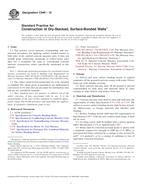 ASTM C946-10
ASTM C946-10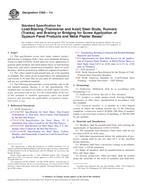 ASTM C955-11c
ASTM C955-11c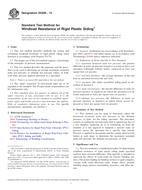 ASTM D5206-13
ASTM D5206-13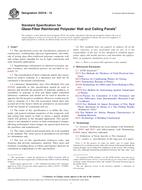 ASTM D5319-12
ASTM D5319-12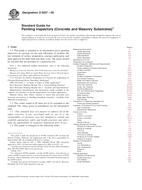 ASTM D6237-09
ASTM D6237-09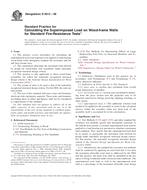 ASTM D6513-08
ASTM D6513-08
 Cookies
Cookies
